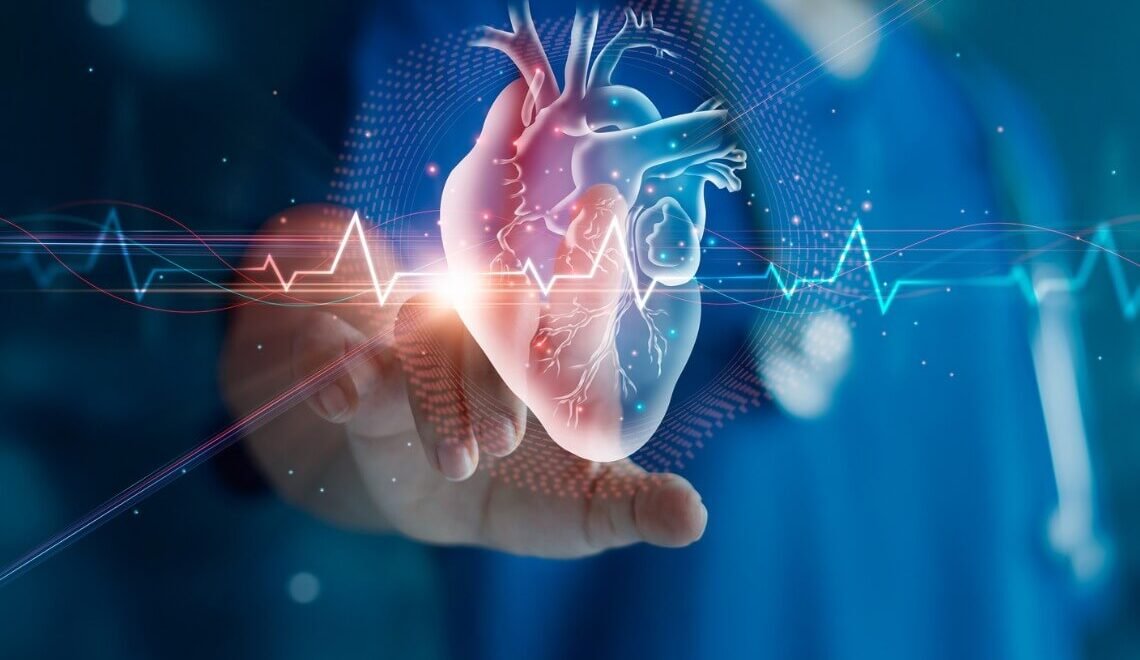
What is an echocardiogram?
An echocardiogram, also known as an echo, is a visual representation of the movement of your heart. During an echo test, a healthcare professional utilizes a handheld wand placed on your chest to capture images of your heart’s valves and chambers using high-frequency sound waves, also known as ultrasound. This procedure enables the provider to assess the pumping function of your heart.
Often, healthcare providers combine echo with Doppler ultrasound and color Doppler techniques to assess the blood flow across your heart’s valves.
One significant advantage of echocardiography is that it does not involve the use of radiation, setting it apart from other diagnostic tests such as X-rays and CT scans, which utilize small amounts of radiation.
Who conducts an echo test?
An echo test is performed by a specialized technician known as a cardiac sonographer. These individuals undergo specific training in conducting echo tests and utilizing the latest technology. They possess the necessary skills to work in various settings, such as hospital rooms and catheterization labs.
What are the different types of echocardiogram?
There are several distinct types of echocardiograms, each offering its own unique advantages in the diagnosis and management of heart disease. These include:
Transthoracic echocardiogram.
Transesophageal echocardiogram.
Exercise stress echocardiogram
What are the techniques utilized in echocardiography?
Various techniques are employed to generate images of the heart. The choice of technique depends on your specific condition and the specific information required by your healthcare provider. These techniques include:
- Two-dimensional (2D) ultrasound: This is the most commonly used approach, producing 2D images displayed as slices on a computer screen. Traditionally, these slices could be stacked to form a 3D structure.
- Three-dimensional (3D) ultrasound: Technological advancements have made 3D imaging more efficient and valuable. New 3D techniques offer improved accuracy in displaying various aspects of heart function, such as blood pumping. Furthermore, 3D imaging enables the sonographer to visualize different angles of the heart.
- Doppler ultrasound: This technique provides information on the speed and direction of blood flow.
- Color Doppler ultrasound: Similar to Doppler ultrasound, this technique displays blood flow patterns using different colors to indicate the direction of flow.
- Strain imagingis an effective method that visualizes the movement alterations in your heart muscle. By detecting subtle changes, it enables the early identification of certain heart conditions.
- On the other hand, contrast imaginginvolves the injection of a contrast agent into one of your veins to enhance the visibility of your heart’s intricate details within the images. Although this method provides valuable insights, it’s important to note that some individuals may exhibit an allergic reaction to the contrast agent. However, it is reassuring that such reactions are typically mild in nature.
- An echocardiogram may be recommended by your healthcare provider for various reasons:2. If your healthcare provider suspects the presence of any form of heart disease, an echocardiogram helps in diagnosing the specific issue and gaining further insights.4. If you are preparing for a surgery or procedure, an echocardiogram might be required prior to the intervention.
- 5. If your healthcare provider wants to assess the effectiveness or outcome of a previous surgery or procedure.
- 3. If you have already received a diagnosis for a certain condition, your healthcare provider may suggest regular echo tests to monitor the status, such as individuals with valve disease.
If you experience symptoms and your healthcare provider needs further information to either identify a problem or exclude potential causes.
What does an echocardiogram show?
An echocardiogram can detect many types of heart disease. These include: Congenital heart disease that you are born with.Infective endocarditis, an infection of the heart chambers or heart valves. Valvular heart disease that affects the “doors” that connect the chambers of the heart. A pericardial disease that affects the two-layered sac that covers the outer surface of the heart. Cardiomyopathy. Affects the heart muscle.
How Long Does an Echocardiogram Take?
Typically, an echocardiogram takes approximately 40 to 60 minutes to complete. However, a transesophageal echo can take up to 90 minutes.
Echocardiogram vs. EKG: What’s the Difference?
An echocardiogram, also known as an echo, and an electrocardiogram (referred to as an EKG or ECG) both assess the condition of your heart. However, they serve different purposes and provide distinct visual representations.
An echocardiogram primarily evaluates the overall structure and function of your heart. This diagnostic procedure generates real-time moving images of your heart.
On the other hand, an EKG measures the electrical activity of your heart. It produces a graphical representation, rather than visual images, indicating your heart rate and rhythm.
When might an echocardiogram be necessary?
An echocardiogram may be recommended by your healthcare provider for various reasons:
- If you experience symptoms and your healthcare provider needs further information to either identify a problem or exclude potential causes.
- If your healthcare provider suspects the presence of any form of heart disease, an echocardiogram helps in diagnosing the specific issue and gaining further insights.
- If you have already received a diagnosis for a certain condition, your healthcare provider may suggest regular
What does an echocardiogram show?
An echocardiogram can detect many types of heart disease. These include:
Congenital heart disease that you are born with.
Cardiomyopathy. Affects the heart muscle.
Infective endocarditis, an infection of the heart chambers or heart valves.
A pericardial disease that affects the two-layered sac that covers the outer surface of the heart.
Valvular heart disease that affects the “doors” that connect the chambers of the heart.
An ultrasound may also show changes in the heart, such as:
Aortic aneurysm. Blood clot. heart tumor.


